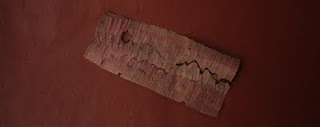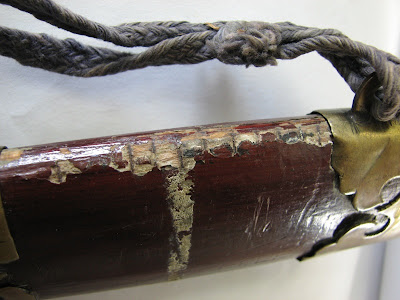Very close to the heart of every woodworker are the problems of measurement, accuracy and reproduction. When designing, I spend much of my time transferring measurements from one drawing to another using marks on a strip of paper. This is not just an accurate way of transferring data but this
method makes it easy to repeat the procedure without having to remember any figures. In the workshop, I generally use a length of wood marked out with a knife. A knife cut is thinner than a pencil line and is therefore more accurate.
As useful as this method is, it really only works within the confines of one workshop. If you want to share measurements with others over distance or time, then it is more convenient to have standardised units of length. The Chinese unit of measurement was the
chi, commonly referred to as the 'Chinese foot'. Unlike the Imperial foot which is divided into 12 inches, the chi was a metric system, divided into ten units; .
 |
| One foot rules - Chinese horn, Chinese bamboo, English boxwood |
Despite standardisation, the Chinese
chi was somewhat variable in length. According to the author Louise Levathes*:
"....the official length of the chi, or Chinese foot, varied considerably throughout the Ming Dynasty, from 9.5 inches to over 13 inches. Moreover, the chi varied depending on what it was being used to construct and where it was being used......"
Of course this variability does present some irritating difficulties for anyone trying to interpret measurements mentioned in old Chinese texts!
 |
| Comparative lengths of Chinese rules |
I have two Chinese rules [see above pics]: one made of horn that is of a significant age, and one made of bamboo. The bamboo one is newer, and was made some time during the last century. The 'brass' dots on the horn example are surprisingly free from tarnish and so are probably a low quality gold. The divisions are not entirely uniform along the length and also, the rules are twisted and bent. It would have been quite difficult to do very accurate work with these, so perhaps they were intended to be used more as a rough guide.
I imagine that whatever measuring methods were employed by the Chinese craftsmen of old, they would still have used the woodworker's maxim:
"Measure twice and cut once!"
* 'When China Ruled the Seas' - by Louise Levathes - Oxford University Press












































